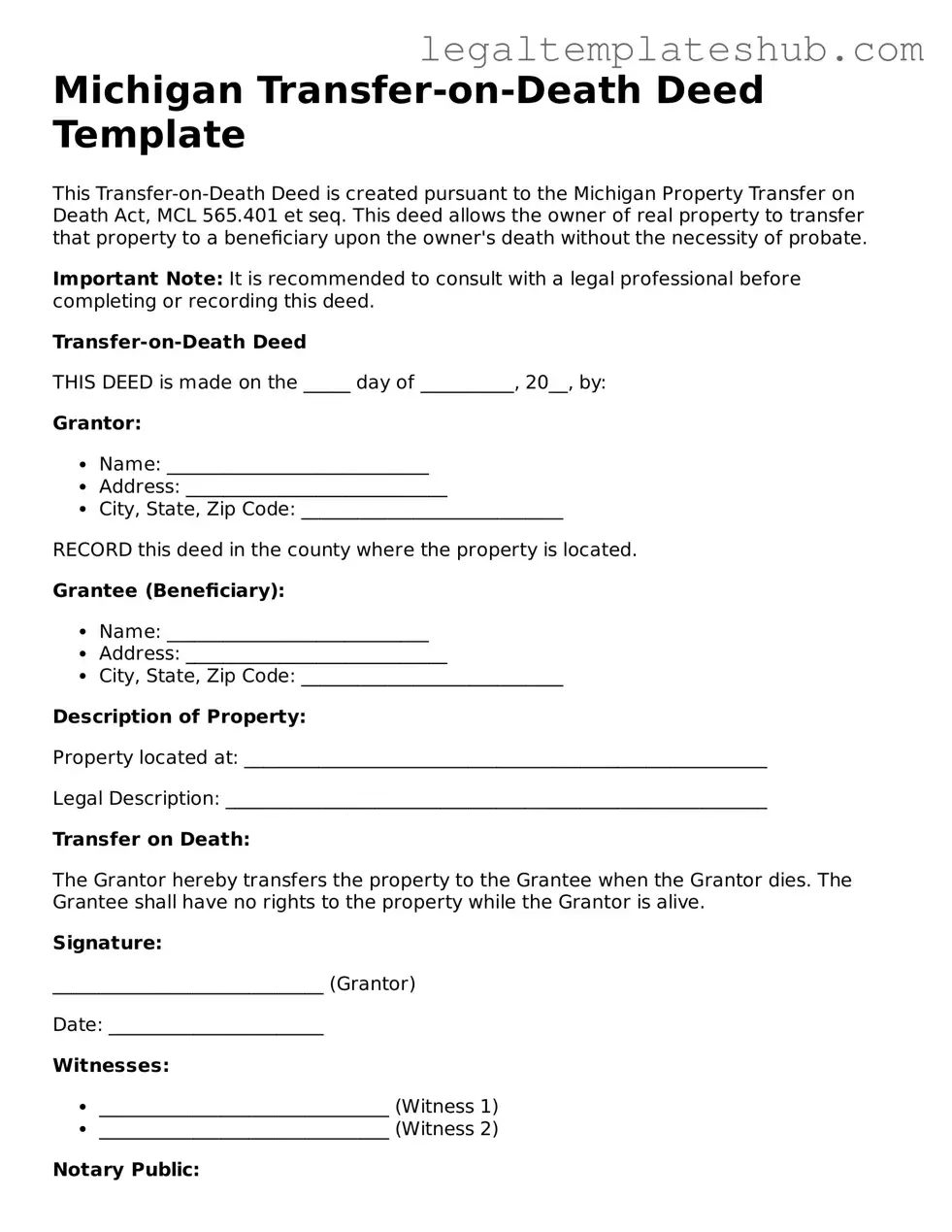Printable Transfer-on-Death Deed Document for Michigan
The Michigan Transfer-on-Death Deed form allows property owners to designate a beneficiary who will receive their real estate upon their death, bypassing the probate process. This legal tool simplifies the transfer of property and can provide peace of mind for both the owner and the beneficiary. To start the process, consider filling out the form by clicking the button below.
Access Editor
